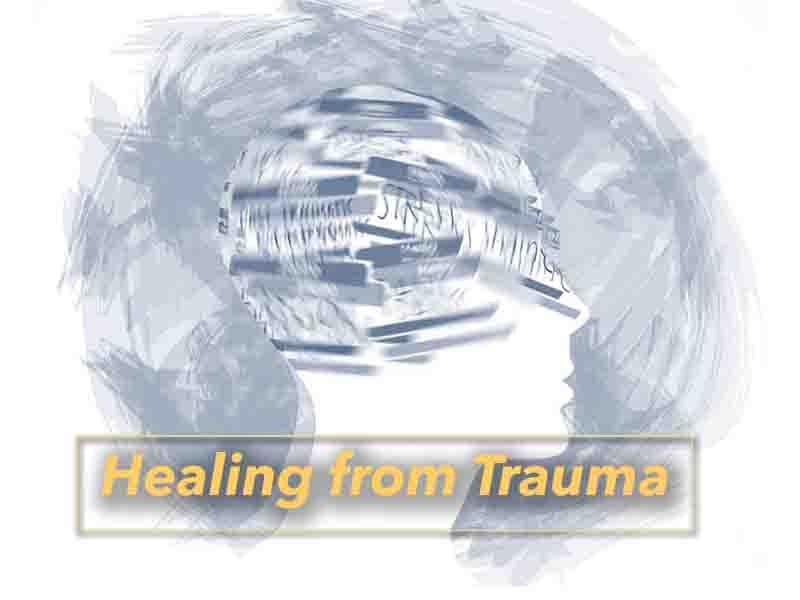
What is Trauma?
According to the American Psychological Association, trauma is defined as “an emotional response to a terrible event like an accident, rape or natural disaster. Immediately after the event, shock and denial are typical. Longer term reactions include unpredictable emotions, flashbacks, strained relationships and even physical symptoms like headaches or nausea” (American Psychological Association, 2021). While this definition is widely accepted within the arenas medical, mental, and behavioral health; some clinicians and researchers are providing a narrower – or laymen – conceptualization of trauma. Pia Mellody and Judy Crane (revered mental health therapists and trauma/codependence specialists) view trauma as ‘less than nurturing’ experiences. Beachway Therapy Center falls within a broader – yet simplified – scope of a definition for what trauma is.
Trauma (a singular event or long-term) has the ability to rupture the emotional psyche, will create neural pathways within the brain that alert the brain and body to think a ‘threat’ is on the horizon or immediate constantly, and dysregulates or disrupts the central nervous system. Long-term adverse experiences create an even more dysregulated nervous system. One example is the hi-jacking of the amygdala which controls the mammalian response of fight, flight, and freeze; long-term expulsion of cortisol (a stress reducing hormone); and lays down what are called implicit memories as well as procedural learning pathways. All of this creates trauma responses, maladaptive behaviors, process addictions, substance abuse and alcohol abuse, dissociation or dreamlike/out of body coping mechanisms, attachment issues, ailing physical health issues, mental health concerns such as depression and anxiety, personality disorders such as Borderline Personality Disorder and Narcissistic Personality Disorder, and exacerbated negative core belief systems – many veiled within the context of shame – ‘there is something wrong with me, and I cannot tell anyone’.
If we take the concept of adverse childhood experiences (ACEs) – a 10-question assessment tool created by the Center for Disease Control (CDC) and administered by clinicians to admitting patients at say a Residential Treatment Center – individuals are asked questions focusing on nurturement, abuse, abandonment, and neglect from ages 0-18. The CDC found in 2019 that out of 250,000 people asked, over 60% had scored at least one ACE, and over 25% had three or more (conservative figures according to the study). This number begins to shed light on the gravity and expansiveness of trauma taking place in children, adolescents, and teenagers.
It is important to explore concepts such as abandonment, neglect, all forms of abuse, shame, and guilt when discussing trauma. These events, that tend to last long term, especially in childhood traumas, fall within the umbrella concept of ‘complex trauma’ (a term coined by Bessel van der Kolk, who is considered a leading trauma professional all around the world). Van der Kolk (2005) defines complex trauma as “the experience of multiple, chronic and prolonged, developmentally adverse traumatic events, most often of an interpersonal nature (e.g., sexual or physical abuse, war, community violence) and early-life onset. These exposures often occur within the child’s caregiving system and include physical, emotional, and educational neglect and child maltreatment beginning in early childhood” (p.2)

How Does Trauma Show Up?
Adult survivors of interpersonal trauma that occurs at an early age and for prolonged
periods are at a significantly higher risk of experiencing significant psychiatric symptoms above and beyond posttraumatic stress disorder (PTSD) symptomology, including affect dysregulation, dissociative symptoms, somatization, character pathology, and aggression against self and others (van der Kolk, Roth, Pelcovitz, Sunday, & Spinazzola, 2005). These only scratch the surface and offer us a broad scope of what trauma may look like. In adults that may enter a residential treatment center for say drug and/or alcohol addiction, the trauma may look just like that – a drug addiction. However, process addictions show up looking like sexual promiscuity or anorexia, love addiction, disordered eating, self-harm (cutting, plucking, pulling, and picking), video games, workaholism, attachment issues, perfectionism, hyper-activity/sensitivity, productivity, codependency, and more.
Those who may have suffered a singular event such as a natural disaster, rape, car accident, death, loss of a career, or even divorce can also have trauma responses and/or symptoms that fall within the PTSD criteria. PTSD criteria according to what mental health clinicians use to help diagnosis and develop treatment plans for, see characteristics of PTSD falling within these symptoms: a stressor or event, intrusion symptoms, avoidance, negative alterations in cognitions and mood, alterations in arousal and reactivity, duration, functional significance, and exclusion. Even further, the right hemisphere takes over due to the amygdala hi-jacking. Right brain functioning is emotions and implicit memories – and the left hemisphere and pre-frontal cortex (executive functioning with logic, rational, and analytical processes) are no longer operating and ‘speaking’ with the rest of the brain and body. A total lack of feeling ‘safe’ in the present moment becomes the standard operating procedure for many trauma victims. Some trauma survivors report feeling like there is always a threat – and they are hyper-vigilant in establishing any possible threats coming their way.
Trauma shows up in individuals through sensory, visceral, and cellular methods; not just maladaptively in behaviors or in core-beliefs about oneself. The smell of a cologne may trigger an individual due to their father wearing that and physically abusing them. An individual may have stomach issues and aches due to the trauma literally stored within the body – or as Van der Kolk’s top 100 best-seller is titled, The Body Keeps the Score. Trauma can be passed down through generations as well and stored within the DNA from ancestors.

Substance Abuse and Trauma
Individuals who are survivors of trauma have a propensity to use illicit substances such as heroin or cocaine, or drink copious amounts of alcohol. They will not consume these substances to pleasure-seek but truly as a survival strategy. An individuals’ body and mind has become hardwired to adapt to and survive from traumatic event(s), and many will self-soothe and self-regulate with drugs and alcohol. The substances will numb the impulsivity and reactivity or even obsessive thinking, combat the helplessness through hypervigilance coupled with power and control, to treat depressive or ‘deadening’ symptoms, negate the intrusive memories, and ultimately, they are seeking a way to feel safe – or at least safer – in the scary world around them (Fisher, 2008).
Sobriety or the absence of drugs and alcohol for an addicted individual only addresses the actual addiction issues, not the traumas. The post-traumatic addiction is a survival strategy for the person, and now that strategy has been removed. This leads to an increased post traumatic flooding within the body and the mind. Individuals may see an increased emotional dysregulation, autonomic dysregulation, increase in impulsive behaviors and decisions, and even flashbacks of their traumatic event(s). Therapeutic milieu and acumen require individuals to address both the substance abuse and the trauma collaterally.

How Do We Heal Trauma?
Trauma does not heal in a linear process. Trauma healing is not a ‘one size fits all’ nor does it just go away and never return. One of the goals of trauma healing is to reduce the symptomologies, reactivity/reactions, visceral ailments, and negative core beliefs (shame-based beliefs/pride-based identities) that are preventing an individual from living a whole-hearted, connected, healthy life. This is not limited to just ones’ relationship with others, but also with themselves. Brené Brown highlights that human beings desire and are worthy of connection and love. The desire for both of these things is often times ruptured, shattered, and non-existent for trauma survivors. Trauma healing requires gentleness, empathy, deep listening, deep understanding, and patience – from both clinician and client.
Trauma survivors have a tendency to re-create various traumas or dysfunctional patterns that were either forced upon them as children, or they have inflicted pain and harm on others without understanding why they continue to do what they are doing. Many trauma survivors’ maladaptive behavioral patterns, attachment wounds, and fear of abandonment/neglect create dysfunction in their relationships – ultimately causing unstable relationships and instability within themselves. These must be addressed as well in treatment while simultaneously bringing awareness to the original event(s)/ruptures and working on those events. Some therapists choose to not go backwards and stay in the present while healing and treating trauma. There is not a right or wrong way, again, treatment for trauma is specific and individualized.
In our professional opinion, trauma healing requires what we call in the clinical field a top-down/bottom-up approach. The body stores the trauma just as much as the mind does. A person first begins their journey by exploring what happened to them and feeling safe enough to talk about this (top). We can begin by helping the person tell their trauma story. We bare witness as they bare their soul and talk about the adverse event(s) that have taken place in their lives. We help them find their voice and tell their story. We help them process or re-process the events that took place as long as the individual is able to positively resource and not get ‘stuck’ entirely in the traumatic memory. Some clinicians will then implement various techniques and somatic work (bottom) to help the body heal as well. The stomach or ‘gut brain’ (as described by neuroscience guru Dan Siegel) ‘speaks’ to the embodied or skull brain. Many trauma survivors described pits, rocks, voids, tension, black holes, boulders, and the like – when ‘getting into their bodies and noticing their stomach regions. Some individuals describe the ‘weight of the world’ in the shoulders, necks, and upper back areas. After gently, slowly, and methodically working to relieve these pains and tensions, many trauma survivors report back lessened organ/muscle/tissue pains that they had become accustomed to feeling. Right hemisphere therapy (see Pat Orden’s book Right Brain Therapy) allows for trauma victims to begin accessing the core emotions and memories that were unable to lay down proper memories (like a broken movie reel, with only snapshots appearing) and heal the body and the mind.
Some techniques used to help those suffering from trauma are cognitive behavior therapy, dialectical behavioral therapy, experiential group therapy, EMDR, somatic (body) experiencing or body-dialoguing, existential talk therapy, internal family systems, psychoeducation, and more. No one particular treatment technique is a sure thing for each trauma victim/survivor. We have found that a mixed-modality approach has helped individuals find some healing and resolution – along with nervous system regulation. The art of dance, movement, deep belly breathing, processing emotional distress, mindfulness, somatic mirroring, and more – all have shown effectiveness in healing trauma from both the body and the mind.
As clinicians, we hold a safe space with trauma survivors to be deeply seen, deeply heard, and deeply understood. We listen with intent and deep empathy, while providing our training and skills to help trauma resolution take place. Trauma healing/work has peaks and valleys during the healing process, a journey if you will. Trauma healing can take time, but healing is attainable with the help of professionals. When trauma clients arrive to treatment, the trauma is not the only pathology that is being addressed in their treatment planning. However, helping individuals find some safety within the mind and body can begin this sometimes painful yet rewarding process of healing those soul ruptures and heart wounds that have been embedded within their core fabric of their beings – sometimes for decades.


